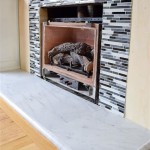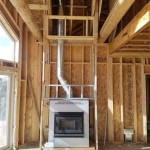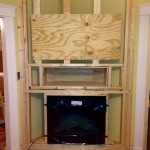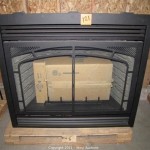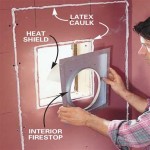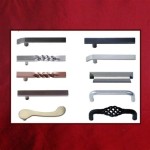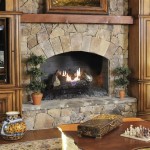How To Reface Your Fireplace With Stone Veneer Designs
Refacing a fireplace with stone veneer is a popular home improvement project that can dramatically enhance the aesthetic appeal of a living space. Stone veneer offers the look and feel of natural stone without the substantial weight and cost, making it a viable option for many homeowners. This article outlines the process involved in refacing a fireplace with stone veneer, covering preparation, installation, and essential considerations for a successful outcome.
Planning and Preparation for Stone Veneer Application
Before embarking on the refacing project, thorough planning and preparation are crucial. This phase involves assessing the existing fireplace structure, selecting the appropriate stone veneer, and gathering the necessary tools and materials. Careful execution of these initial steps will significantly impact the final result and ensure a durable and visually appealing installation.
The first step is to evaluate the existing fireplace surround. Determine the material and condition of the current surface. If the existing facade is made of brick, concrete, or a similar porous material, it can often be used as a direct substrate for the stone veneer. However, if the existing surface is smooth, such as painted drywall or glossy tile, additional preparation will be required. A smooth surface will need to be roughened or covered with a lath system to provide adequate adhesion for the mortar.
The selection of stone veneer is a key decision. Stone veneer comes in various styles, colors, and textures, ranging from natural-looking ledgestone to more contemporary stacked stone designs. Consider the overall style of the room and choose a veneer that complements the existing décor. Furthermore, consider the firebox opening. While stone is fire resistant, it is still important to follow local building codes to ensure proper safety. Consult with a professional if you are unsure. Stone veneer is typically sold by the square foot, and it is advisable to calculate the area to be covered and purchase slightly more material than needed to account for cuts and waste. It is also important to consider the corner pieces, edges, and any other finishing elements that may be required for a professional look.
Gather the necessary tools and materials. This includes: stone veneer, mortar, a notched trowel, a level, a rubber mallet, a wet saw or angle grinder with a diamond blade (for cutting the stone), safety glasses, work gloves, a sponge, a bucket, a mixing paddle, a wire brush, and a lath system (if required). Ensure that the tools are in good working condition before starting the project.
Surface preparation is paramount. If using a lath system, start by attaching it to the existing surface using appropriate fasteners, ensuring it is securely anchored. If the existing surface is porous, clean it thoroughly with a wire brush to remove any loose debris, dirt, or efflorescence. Pressure washing can also be effective, but ensure the surface is completely dry before applying the mortar. For painted surfaces, scuffing with sandpaper or applying a bonding agent can improve adhesion of the mortar. Remove any loose paint or drywall paper. Consider using a moisture barrier to protect combustible materials around the fireplace mantel.
Stone Veneer Installation Process
The installation process involves applying mortar to the back of the individual stone veneer pieces and carefully positioning them on the prepared surface. This requires precision and attention to detail to ensure a uniform and aesthetically pleasing result. The mortar mix needs to be appropriate for stone veneer application and should be prepared according to the manufacturer's instructions. A consistent mortar consistency is essential for proper adhesion and preventing the stones from slipping during the curing process.
Begin by mixing the mortar according to the manufacturer's instructions. Use a mixing paddle and a bucket to ensure a consistent and lump-free mixture. Let the mortar slake for the recommended time before using it. Apply a layer of mortar to the back of the first stone veneer piece using a notched trowel. The notches in the trowel create ridges that help the mortar adhere to both the stone and the underlying surface. Ensure the mortar is evenly distributed and covers the entire back of the stone.
Carefully position the stone veneer piece on the prepared surface. Press it firmly into place, ensuring good contact with the mortar. Use a level to ensure that the stone is properly aligned. If necessary, use a rubber mallet to gently tap the stone into place. Start from the bottom and work upwards, maintaining consistent spacing between the stones. Some stone veneer designs require specific patterns or arrangements, so refer to the manufacturer's guidelines for proper installation.
As you install the stones, regularly check for plumb and level. Adjust the position of the stones as needed to ensure a straight and even appearance. Use spacers, small pieces of cardboard, or shims to maintain consistent spacing between the stones. This is particularly important for stone veneer designs that feature grout lines. Wipe away any excess mortar that squeezes out from between the stones using a damp sponge. This will prevent the mortar from hardening on the surface of the stones and making cleanup more difficult. For areas that require cutting, measure and mark the stone veneer with a pencil. Use a wet saw or an angle grinder with a diamond blade to cut the stone to the desired shape and size. Always wear safety glasses when cutting stone to protect your eyes from flying debris. Ensure that the edges of the cut stones are smooth and free of sharp burrs. Apply mortar to the back of the cut stones and install them in the same manner as the other pieces.
Pay attention to the corners and edges of the fireplace surround. Corner pieces are often available that are specifically designed for this purpose. Install the corner pieces first to create a clean and professional finish. If corner pieces are not available, the stone veneer pieces can be mitered to create a seamless corner. This requires precise cutting and fitting to achieve a tight and visually appealing joint.
Continue installing the stone veneer until the entire fireplace surround is covered. Regularly step back and assess the overall appearance to ensure that the stones are evenly spaced and properly aligned. Make any necessary adjustments before the mortar sets. Allow the mortar to cure for the recommended time, as specified by the manufacturer. This typically takes 24 to 48 hours.
Finishing and Maintenance of Stone Veneer Fireplace
After the mortar has fully cured, the final steps involve cleaning the stone veneer surface, applying any necessary sealants, and establishing a maintenance routine to preserve its appearance. Proper finishing and maintenance will ensure the longevity and continued aesthetic appeal of the refaced fireplace.
Once the mortar is fully cured, carefully clean the stone veneer surface. Use a soft brush and a mild detergent to remove any remaining mortar residue, dust, or dirt. Avoid using harsh chemicals or abrasive cleaners, as these can damage the stone veneer. Rinse the surface thoroughly with clean water and allow it to dry completely. Inspect the grout lines between the stones. If necessary, apply grout to fill any gaps or voids. Use a grout float to press the grout into the joints, and then wipe away any excess grout with a damp sponge. Allow the grout to cure according to the manufacturer's instructions.
Consider applying a sealant to the stone veneer surface. A sealant will help protect the stone from moisture, stains, and discoloration. Choose a sealant that is specifically designed for stone veneer and follow the manufacturer's instructions for application. Test the sealant on a small, inconspicuous area before applying it to the entire surface to ensure that it does not alter the color or appearance of the stone. Apply the sealant evenly using a brush or roller, and allow it to dry completely before using the fireplace.
Establish a regular maintenance routine to keep the stone veneer fireplace looking its best. Periodically dust the surface with a soft cloth or brush to remove any accumulated dust or dirt. Clean the surface with a mild detergent and water as needed to remove any stains or spills. Avoid using harsh chemicals or abrasive cleaners. Inspect the grout lines regularly and repair any cracks or voids as needed. Reapply sealant every few years, or as recommended by the manufacturer, to maintain its protective properties.
By following these guidelines, homeowners can successfully reface their fireplaces with stone veneer, creating a beautiful and durable focal point in their living space. Careful planning, proper installation, and regular maintenance are essential for achieving a professional-looking result and preserving the longevity of the stone veneer.

Refacing A Fireplace With Stone Veneer Horizon

Reface A Fireplace With The Look Of Stone Or Brick Barron Designs

Reface Your Old Fireplace With Stone Veneer For A New Look Solutions Maine

How To Update Your Fireplace With Stone Evolution Of Style

How To Reface A Brick Fireplace With Stone 5 Simple Steps

Reface Your Old Fireplace With Stone Veneer For A New Look Solutions Maine

Read This Before Your Stone Fireplace Makeover Neutral Undertones

How To Reface A Brick Fireplace With Stone 5 Simple Steps

Remodel Your Fireplace In Natural Stone Use

How To Update Your Fireplace With Stone Evolution Of Style
Related Posts

